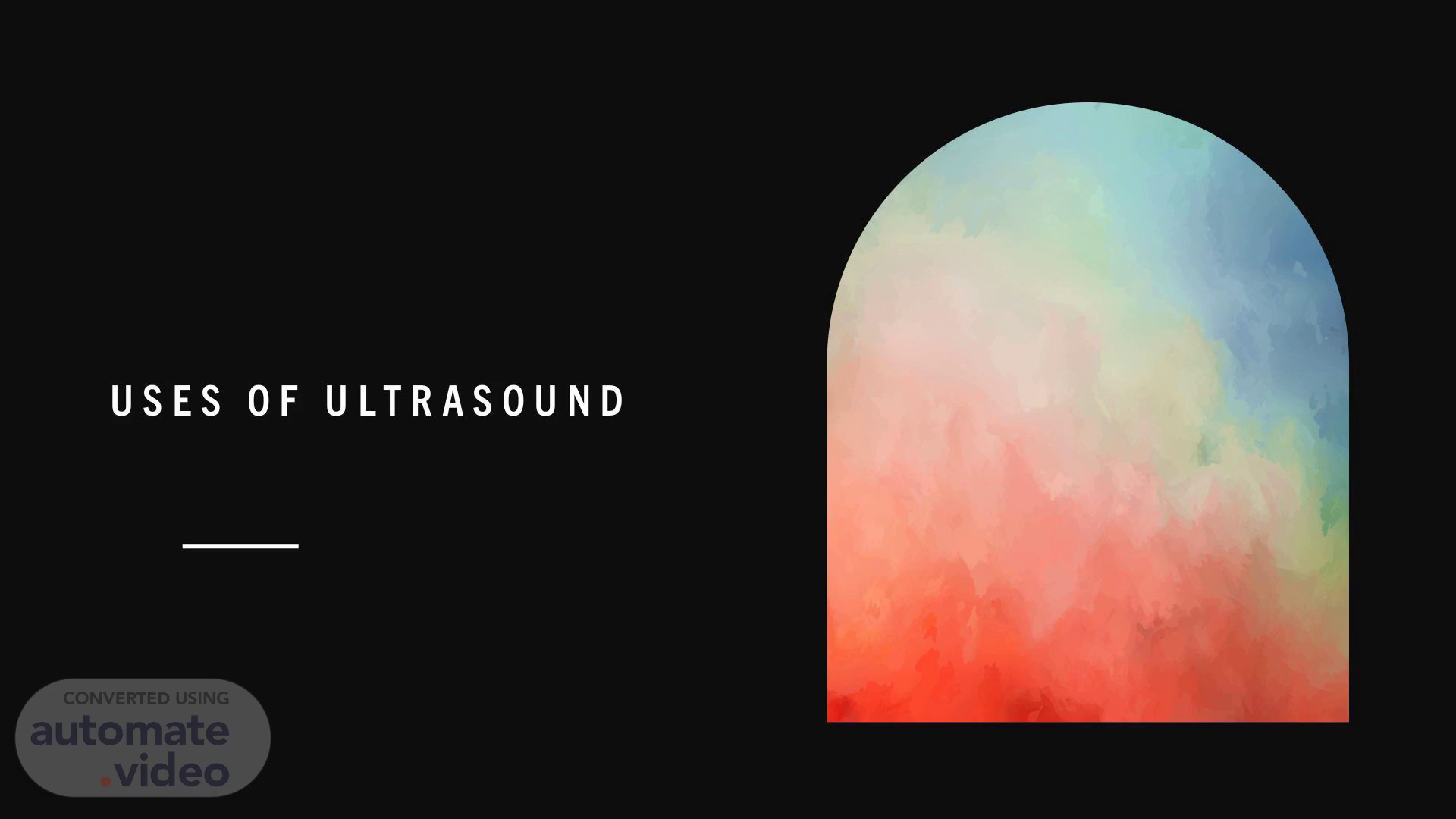Page 1 (0s)
U S E S O F U L T R A S O U N D.
Page 2 (6s)
INTRODUCTION Ultrasonography has evolved to become one of the most versatile modalities for diagnosing and guiding treatment of critically ill patients.
Page 3 (15s)
Applications of Ultrasound The applications of ultrasound are mentioned as well as explained as follows: Cleaning Purposes •For objects that have parts that are hard to access such as spiral tubes or electronic components, The process of ultrasonic cleaning is employed. •The object is submerged into appropriate cleaning materials and then ultrasonic waves are then absorbed by the object. •Because of this, the high-frequency waves generated cause grease and dirt to break away from the substrate..
Page 4 (37s)
1 / 6 / 2 0 2 5 4 Echocardiography • In the electrocardiography procedure, ultrasonic waveforms are utilized to create an image of the human heart through reflection and the detection of these waves coming from different parts of the heart..
Page 5 (50s)
1 / 6 / 2 0 2 5 5 Detection of Cracks • Ultrasound is used to identify cracks in metallic components utilized in the construction of high-rise structures like bridges and buildings. • They create the ultrasonic waveform which is then interpreted by a skilled operator, typically using analysis software, which helps to find and classify imperfections in the test piece. • High-frequency sound waves reflect imperfections with predictable patterns, creating distinct echo patterns that are visible and recorded with portable instruments. • A trained operator can identify specific echo patterns that correspond to the responses of good parts and flaws that are representative. • The echo pattern on the test piece can be compared with the patterns found in these calibration standards to assess the condition of the piece..
Page 6 (1m 21s)
1 / 6 / 2 0 2 5 6 Ultrasonography • Diagnostic ultrasound can be described as a procedure that is based on it. • It shows internal body structures like joints, muscles, and organs within the body. Ultrasonic images are referred to as sonograms. • In this procedure, the ultrasound pulses are transmitted to the tissues using the probe. • The sound bounces off the tissue, and the different tissues reflect the sound that differs in intensity. Echoes of these are recorded and shown as images..
Page 7 (1m 44s)
1 / 6 / 2 0 2 5 7 Nursing Responsibilities IN PROCEDURE; Before the procedure The following interventions are done prior to and during the study: Explain the procedure to the patient .No special preparation is needed. •Encourage the patient to cooperate. Advise the patient to remain still during the test because movement may distort results. He may also be asked to breathe in or out or to briefly hold his breath during the exam. •Explain the need to darken the examination field. The room may be darkened slightly to aid visualization on the monitor screen, and other procedures (ECG and phonocardiography) may be performed simultaneously to time events in the cardiac cycles. •Explain that a vasodilator (amyl nitrate) may be given. The patient may be asked to inhale a gas with a slightly sweet odor while changes in heart functions are recorded..
Page 8 (2m 19s)
1 / 6 / 2 0 2 5 8 During the procedure The following are the nursing considerations during an echocardiogram: •Inform that a conductive gel is applied to the chest area. A conductive gel will be applied to his chest and a quarter-sized transducer will be placed over it. Warn him that he may feel minor discomfort because pressure is exerted to keep the transducer in contact with the skin. •Position the patient on his left side. Explain that transducer is angled to observe different areas of the heart and that he may be repositioned on his left side during the procedure..
Page 9 (2m 44s)
1 / 6 / 2 0 2 5 9 After the procedure The nurse should be aware of these post-procedure nursing interventions after an echocardiogram, they are as follows: •Remove the conductive gel from the patient’s skin. When the procedure is completed, remove the gel from the patient’s chest wall. •Inform the patient that the study will be interpreted by the physician. An official report will be sent to the requesting physician, who will discuss the findings with the patient. •Instruct patient to resume regular diet and activities. There is no special type of care given following the test..
Page 10 (3m 11s)
1 / 6 / 2 0 2 5 THANK YOU FOR WATCHING 10.
